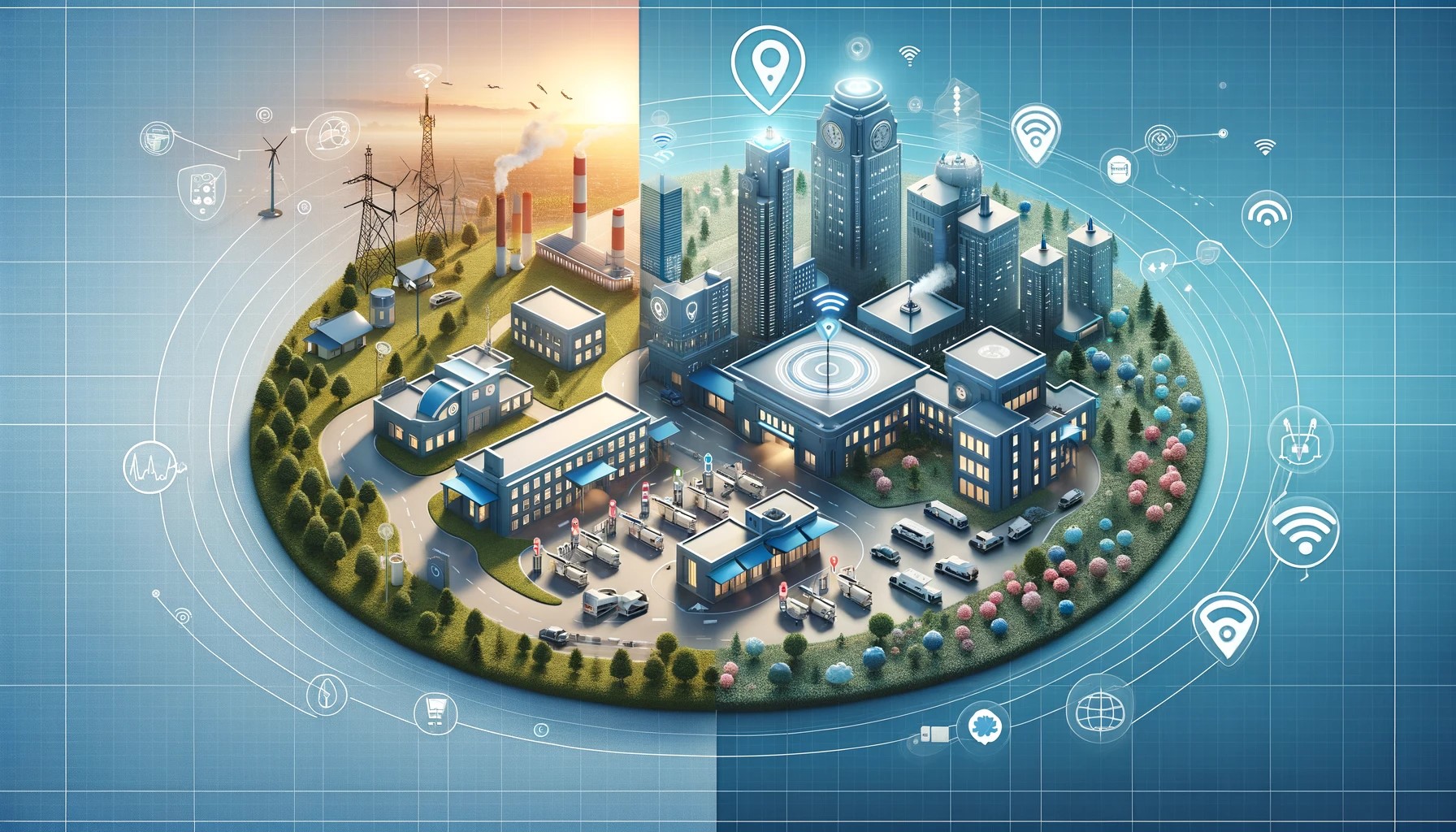The geolocation of medical equipment is a crucial issue for healthcare establishments. Hospitals and clinics need to be able to track equipment to ensure efficient use, minimize loss and theft, and improve patient safety. Several geolocation technologies exist to meet these needs: Wi-Fi, Bluetooth Low Energy (BLE), RFID, etc. In this article, we will examine the various advantages and disadvantages of using BLE for the geolocation of medical equipment and we will see why more and more healthcare establishments are turning to Bluetooth Low Energy (BLE) technology.
What is BLE?
Bluetooth Low Energy (BLE) is a wireless technology designed for low power applications. It is mainly used to connect peripherals such as smart phones, tablets, and smart watches to other devices, such as sensors, health monitors, and medical equipment. BLE is particularly useful for tracking and geolocation applications, as it helps to locate objects in a tight space. BLE location beacons can be attached to all types of medical equipment allowing greater accessibility to geolocation and a better diversification of equipment to be located.
Here are the main advantages of using BLE for the geolocation of medical equipment:
Low energy consumption
BLE consumes much less power than other wireless communication technologies, allowing medical equipment to be located in real time without the need for frequent recharging. On average, the battery life of BLE beacons is three years, but larger beacons can have lifespans of up to 10 years.
Location accuracy
BLE offers high location accuracy ranging from three to five meters, allowing healthcare facilities to quickly locate lost or stolen medical equipment. BLE beacons can be installed on all types of medical equipment whether they contain electronics or not such as wheelchairs, pumps, probes, incubators, respirators, oximeters, etc. Healthcare establishments can thus know in real time where their medical equipment is located, which makes it possible to reduce losses and optimize their use.
Affordable cost
The cost of BLE beacons is relatively affordable, which allows healthcare institutions to set up a geolocation system for medical equipment without having to invest large sums. Moreover, the maintenance cost is also low, as the tags have a relatively long lifespan ranging between three and ten years depending on the format of the tag. At the end of the life of the beacons, the batteries must be replaced or the beacon completely replaced.
Compatibility
BLE is compatible with most modern mobile devices, such as smart phones and tablets, making it easy for healthcare facilities to use mobile apps to track medical equipment in real time or access supporting information quickly and easily. . Apps can also be used to send alerts in the event of theft or loss of equipment.
Ease of installation and configuration
BLE is an easy to install and configure technology. BLE beacons can be installed in minutes, and BLE receivers can be placed in strategic locations without the need for complex construction or installation work. In addition, BLE-based geolocation systems are easy to use and do not require special training for users.
Here are the main disadvantages of using BLE for the geolocation of medical equipment:
Replacement of beacons
Although BLE beacons consume little power, their lifespan is not endless. As a result, it can be laborious to have to replace the BLE beacons or their battery depending on the degree of use or the location of the medical equipment. It is important to plan the replacement of batteries or beacons several months in advance and to budget accordingly.
Limited transmission distance
The transmission distance of BLE is limited to about 30 meters, which can be a disadvantage in large hospitals or clinics with a high density of medical equipment. To correct this problem, it is important to analyze the configuration of the establishments and to strategically plan the position of the BLE receivers in order to have an optimal BLE coverage.
Interference
BLE signals can be disturbed by many factors such as other electronic devices, human bodies, the composition of walls (concrete, metal, etc.), which can affect the accuracy of the location of medical equipment.
Complex setup
Installing a BLE network for the geolocation of medical equipment in order to have optimal coverage can be complex and require specific technical skills. A bad configuration of the BLE network coverage can cause geolocation problems.
Although BLE has both advantages and disadvantages in the geolocation of medical equipment, it remains a promising technology for improving the efficiency and safety of healthcare. Advantages such as low power consumption, location accuracy and compatibility can be very useful for healthcare facilities. However, the drawbacks such as limited transmission distance, potential interference, complex installation of network coverage should be considered before deciding to use this technology.
Overall, hospitals and clinics should carefully evaluate the pros and cons of using BLE in their environment and take the necessary steps to mitigate potential risks. Ultimately, the decision whether or not to use BLE for the geolocation of medical equipment must be made based on the specific needs of each healthcare facility and their environment, taking into account the advantages and disadvantages of this technology.
If you want to know more about our geolocation system, do not hesitate to Contact us here !




